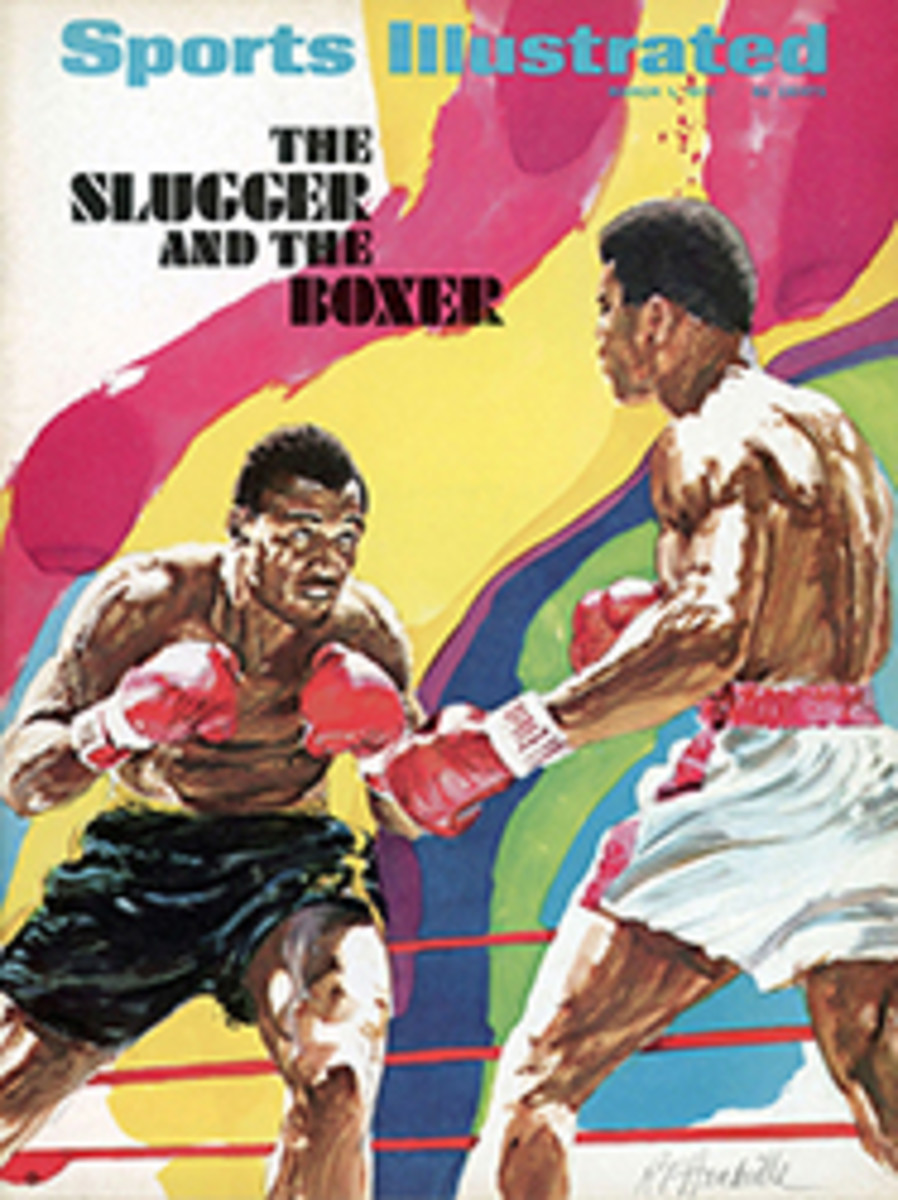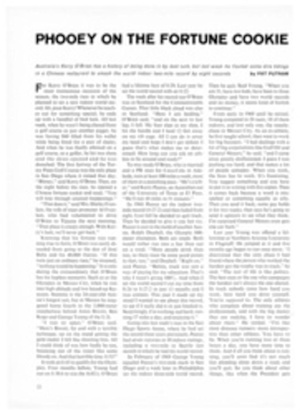
Bridging the generation gap with a new deal
As in other sports, bridge is a game where youth is bound to be served—if perhaps not so soon. Unlike many sports, however, it offers an added advantage: learning how to play while you are young can provide a lifetime of competitive fun and companionship. I was therefore fascinated by the recent International Junior Pairs Championship, planned as the first of an annual series in which the same deals are played and scored simultaneously in New York and London, thanks to the Telex facilities of The New York Times.
I would dearly have loved to compete in this year's inaugural event but, alas, I could not quite meet the entry requirement that limited participation to players 25 years of age and under. Still, any move to raise this limit next year would not get my vote. Quite properly, the emphasis is going the other way, with more and more inducements being given to youthful and less experienced players to take part in organized competition.
For example, beginning later this year, the American Contract Bridge League will drastically reduce its initiation fee (from the present $25 to $5) to college and high school bridge clubs for sanctioned affiliation that will enable them to award master points to their winners. The ACBL is also assisting the Association of College Unions-International in the organization of the 1971 intercollegiate tournament, which has already begun on various college campuses, with the finals to be played April 30-May 1 at Northern Illinois University in De Kalb.
There is also some provision for young participants at the national level. A sub-National Masters pair event for players with fewer than 50 master points (no age limit) already exists as part of the Spring Nationals, which this year will be held in Atlanta beginning March 12. And more and more novice games are being added to the schedules of regional and sectional tournaments.
In Europe, where youth tournaments were inaugurated several years ago, the age cutoff has been dropped from 30 to 25. But no matter how low, an age limit alone may not be enough to insure equitable competition among young players. In my view there should be some limit as well to the number of master points an entrant may hold. Both American winners of the New York-London Junior Pairs, 19-year-old Mark Feldman, a junior at MIT, and 23-year-old Michael Gurwitz, a recent MIT graduate, have already become Life Masters, which means that each has earned at least 300 master points and the highest player ranking offered by the ACBL. Beating them would have been a remarkable achievement for less experienced competitors.
As their reward for winning, Feldman and Gurwitz will go to England sometime this summer to play in a tournament team event with the British runners-up. The British winners, Phillip Alder, who attends London University, and Ceri (pronounced Kerry) Evans, a student at Kingston College of Technology, will come to the U.S.—probably for the Fun City Regionals in New York in July—to team up with the American runners-up, Michael Rosmarin and Russ Pearly, a couple of Rensselaer Polytech undergrads.
Gurwitz demonstrated his technical skill on the deal shown here from the transatlantic event. After three passes Gurwitz (South) had three possible opening bids. Most American experts would try one no trump or one diamond, but North-South was employing the British Acol style in which one no trump would show a weak opening.
Gurwitz therefore opened with one spade and jumped to three no trump on the next round when his partner was able to bid hearts at the two level. The final contract was eminently sound, but the auction had warned West that a spade lead would be inadvisable. He debated between the minor suits and then put the club 6 on the table.
South won East's queen with the king and led a heart to the jack, which East allowed to hold. The closed hand was entered with a diamond, and a second heart play revealed the bad break as West discarded a spade. East captured dummy's queen with the ace and returned the club 10. South held up dummy's club ace until the next round, then cashed the heart king, discarding a spade, and looked for his ninth trick.
The obvious procedure was to finesse in spades. If the queen lost to the king an even diamond split would be needed. But there was a better way, and Gurwitz found it. He played his remaining high diamonds, leaving the spades untouched. When West proved to have started with four diamonds he was thrown in with a diamond lead. After cashing his high club West was forced to lead away from his spade king to give declarer his game-going trick.
At many of the other tables South had no trouble making three no trump because spades were not bid and West led the suit.
ILLUSTRATION
East-West vulnerable West dealer
NORTH
[6 of Spades]
[5 of Spades]
[King of Hearts]
[Queen of Hearts]
[Jack of Hearts]
[7 of Hearts]
[6 of Hearts]
[8 of Diamonds]
[4 of Diamonds]
[2 of Diamonds]
[Ace of Clubs]
[4 of Clubs]
[2 of Clubs]
WEST
[King of Spades]
[Jack of Spades]
[8 of Spades]
[4 of Spades]
[2 of Hearts]
[10 of Diamonds]
[7 of Diamonds]
[6 of Diamonds]
[3 of Diamonds]
[Jack of Clubs]
[9 of Clubs]
[8 of Clubs]
[6 of Clubs]
EAST
[10 of Spades]
[9 of Spades]
[3 of Spades]
[Ace of Hearts]
[10 of Hearts]
[9 of Hearts]
[5 of Hearts]
[3 of Hearts]
[Jack of Diamonds]
[9 of Diamonds]
[Queen of Clubs]
[10 of Clubs]
[5 of Clubs]
SOUTH
[Ace of Spades]
[Queen of Spades]
[7 of Spades]
[2 of Spades]
[8 of Hearts]
[4 of Hearts]
[Ace of Diamonds]
[King of Diamonds]
[Queen of Diamonds]
[5 of Diamonds]
[King of Clubs]
[7 of Clubs]
[3 of Clubs]
WEST
PASS
PASS
PASS
NORTH
PASS
2 [Heart]
PASS
EAST
PASS
PASS
PASS
SOUTH
1 [Spade]
3 NT
Opening lead: 6 of clubs

